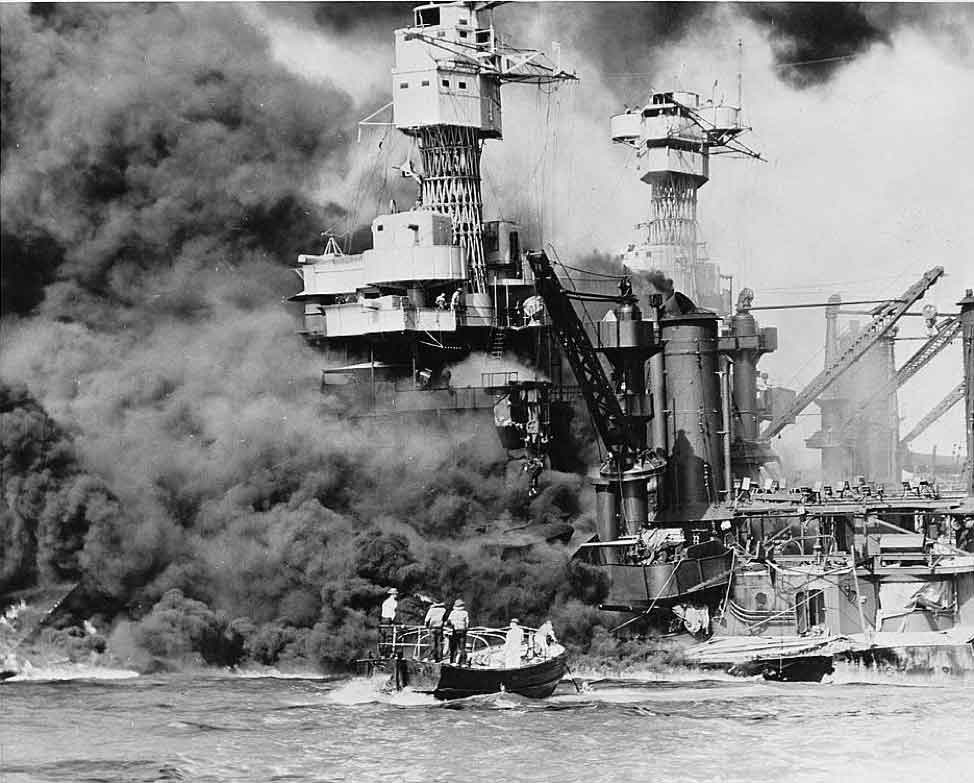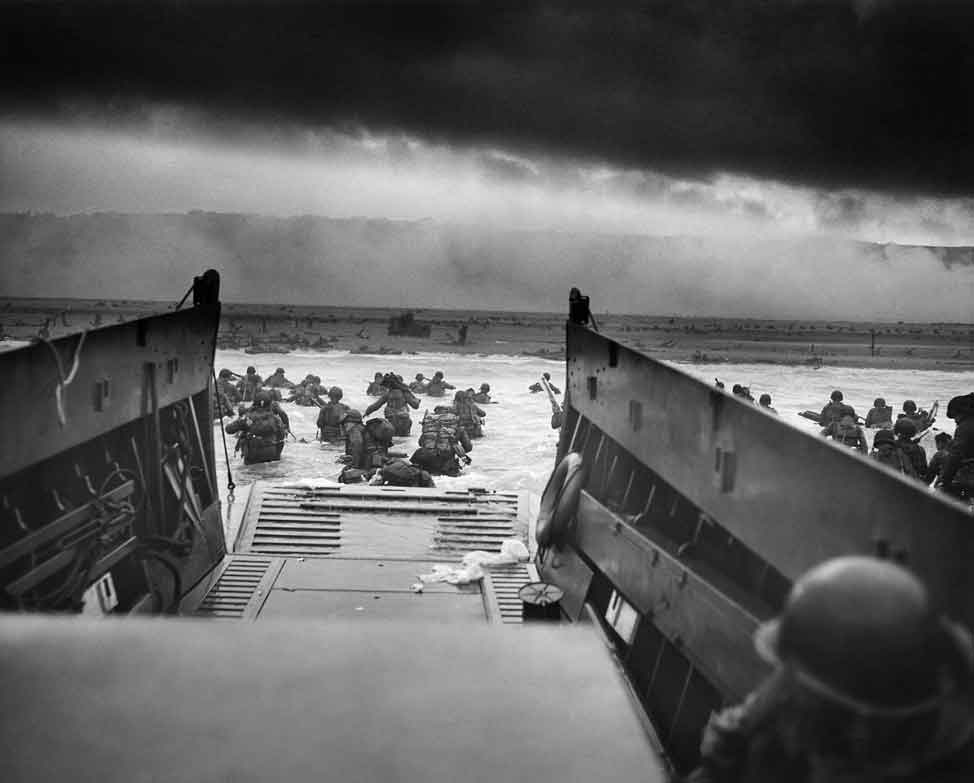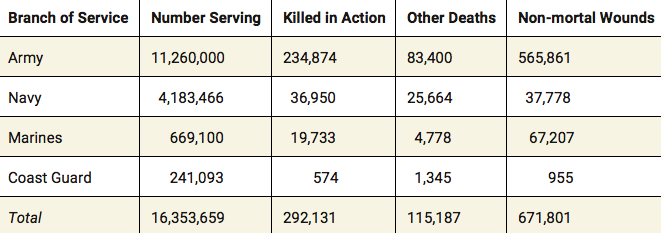World War II
1941 – 1945
World War II began officially for the United States on December 7, 1941, when Japan–after several years of aggressive expansionism in Asia–unleashed a surprise attack on the American naval base at Pearl Harbor, Hawaii. War had been raging in Europe since the German invasion of Poland in September 1939, which prompted declarations of war against Hitler by Britain and France. The U.S. had unofficially participated in this European war by providing material support for Britain as well as naval cooperation with the British on the North Atlantic to the extent of a “full-scale if undeclared naval war with German submarines.” President Franklin Roosevelt shared the ideal with British Prime Minister Winston Churchill that Japanese and German victories would constitute the conquest of “barbarism” over “civilization,” an outcome completely unacceptable to either of these leaders. Despite the strength of Roosevelt’s convictions, public opinion in the U.S. remained divided between isolationism, neutrality, and even some sympathy with the Nazi cause, although “most Americans supported Britain.” Pearl Harbor changed all that: suddenly the distant wars were no longer a “spectator sport” for Americans but would directly test and condition the existence of the nation for years to come.

As journalist and historian Studs Terkel has demonstrated in his classic book of the same name, most Americans have remembered World War II as “the Good War” ever since. At least three persuasive reasons stand behind this national memory: first, Americans seemed all but unanimously to rally around the causes for which the country went to war because most Americans found it reasonable and easy to understand the Allied war aims in clear terms of good versus evil, with no question that the Allied side truly represented human decency, morality, justice and democracy. Second, as the nation’s economic resources were mobilized for the war effort, the vast unemployment and privation that had characterized the entire decade of the 1930s disappeared almost overnight, creating a great economic boom unprecedented in its depth and intensity. Third, the American contribution to the Allied victory in 1945 ensured the nation’s position as the preeminent leader in world affairs-a condition still in place today. And finally, thanks to the recognition of the immense sacrifices made by the American armed forces that the U.S. Congress offered to the veterans of the Good War through the G.I. Bill of 1944, millions of American families were able to join the ranks of the middle class once the war was over.

But as many of Terkel’s interviewees point out, the realities of the Good War were more complex and harsher than the popular myth might lead us to believe. After all, the war claimed the lives of more than 400,000 Americans–a horrendous toll dwarfed nevertheless by the worldwide estimate of 50,000,000 war-related deaths. As strong as the national wartime consensus seemed to be, both the home front and the fighting fronts remained sharply divided along lines of race, class and gender. Many Americans who had fought so hard and gallantly overseas for humanity and democracy found that they still had to fight for those precious ideals once they came back home. Even the nation’s world leadership remained under constant challenge by our former ally, the Soviet Union, which proved itself to be a potent threat to American security for the better part of fifty years following the war’s end.
American heroism of the highest order emerged over and over again on all fronts during the war, in places and circumstances far too numerous to list here. May of the Good War’s heroes are still alive today to provide living witness to the great events of their generation. Seize the opportunity, if you can, to talk with them about their experiences, and to help them pass their knowledge on to future generations, to preserve the legacy of the Good War which will forever deserve our understanding, respect, and gratitude.
RECOMMENDED READING
“The Good War”: An Oral History of World War II
by Studs Turkel
A Democracy at War – Americas Fight at Home and Abroad in WWII
by William L. O’Neill
A Bomber Pilot in WWII: From Farm Boy to Pilot: 35 Missions in the B-24 Liberator Bomber
by Walter F. Hughes
The GI’s War: American Soldiers in Europe during WWII
by Edwin Hoyt
All books are available at our Museum Library which is open to the public every Thursday from 10am to 4pm.
AMERICAN CASUALTIES

